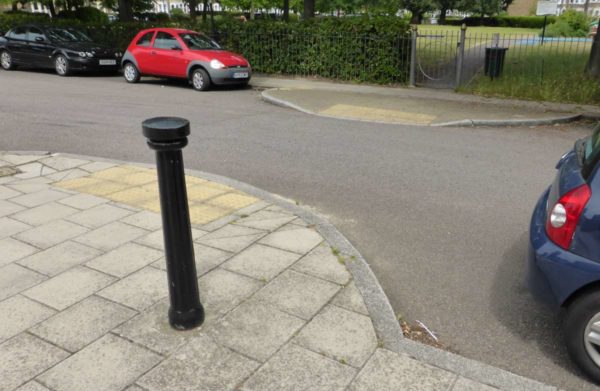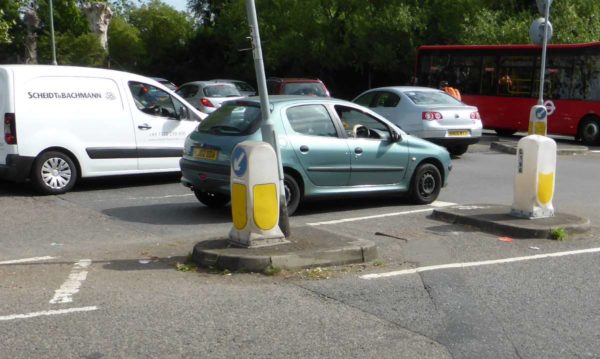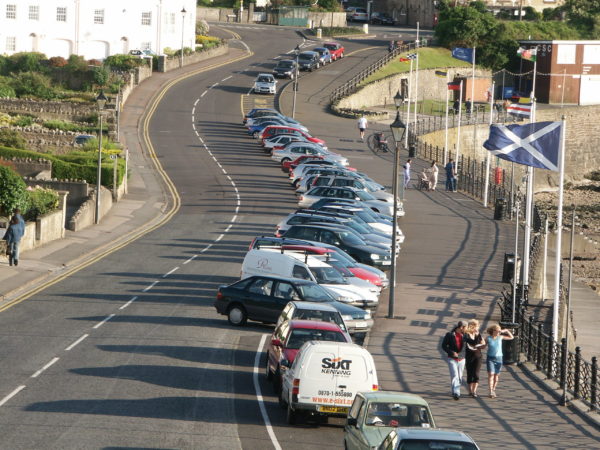Is it safer to reverse into a car parking space?
Some people dread reversing into a parking space, but as cars become more capable with sensors, cameras and even automated parking, getting it right the first time and avoiding damage becomes easier.
Parallel parking
To parallel park, for example, parking along the kerb, reversing is the preferred method as you don’t need as much space. By steering from the trailing end of the vehicle, the angle of entry is more favourable as there’s no ‘cut-in’ (when you drive forwards, the rear wheels track in a circle of smaller radius than the front wheels, meaning that when you drive into a car park forwards, there’s more of a risk of scraping the side of your car).


The danger with parallel parking on a busy road is that you have to stop in the stream of traffic which then might try to drive around you. Make your intentions clear by indicating early, slowing down and moving closer to the line of cars while you’re looking for a gap. Be careful that you don’t hit any of the existing parked vehicles and that you don’t endanger cyclists that might be filtering on your left.
Bay parking
Bay parking is at 90 degrees to the direction of traffic. Like with parallel parking, you will need to hold up traffic while you reverse, but in this case, you will block the whole lane. Give clear signals of your intention to park – the risk is that as you go past the car park you intend to reverse into, that a tailgating driver behind you blocks you from reversing into it.
Like with parallel parking, you don’t get the cut-in from trying to get into the park forwards. With narrow car parks, you might even need to drive onto the opposite side of the road to get into the car park if you try going in forwards.
If you park forwards, you have to reverse out. Visibility is worse when reversing, especially if you have a tall vehicle next to you. If you didn’t get the forward park correct the first time, you’ll be reversing out backwards to straighten up.
If you’ve parked in reverse, there’s better visibility when you pull out. Sure, you have to get the nose of the car out into the traffic flow, but that’s preferable to the rear half of the car. This is better for other road users, including cyclists who are more vulnerable when you’re reversing out due to your blind spots.
Exiting a car park forwards is quicker.

Parking with your boot to the footpath is safer for loading shopping as you don’t have to stand on the roadway.
On the rare occasion that your car won’t start (e.g. the battery is flat), you have better access to the engine for other vehicles to jump-start you, or for a breakdown service to get to the vehicle.
The height of the front bumper is often lower than the rear bumper meaning when you park forward there’s more risk of damaging it on the kerb.
Angle parking or herringbone parking
Angle parking is designed to drive in forward.

- Understanding the National Standards for Riding Mopeds and Motorcycles
- Livestock Transport Rules UK: A Complete Guide to Animal Transportation Requirements
- The Role of Safety Advisers in Dangerous Goods Transport
- Sustainable Driving: Reducing Your Environmental Impact on the Road
- Developing Effective Lesson Plans for Driver Training
- UK Agricultural Vehicle Registration and Tax Relief
- Challenges of Transporting Radioactive Materials (Class 7)
- Exemptions and support for Clean Air Zone charges
- Navigating Legal Requirements: The UK Motorcycle Licensing Rules
- Safe Transportation of Agricultural Chemicals and Hazardous Materials
- Innovations in Vehicle Construction for ADR Compliance
- Motorcycle Recovery Operations: How to Recovery a Broken Down Motorbike
- Alternative Fuels in Agricultural Vehicles
- Carriage of Dangerous Solids in Bulk Containers
- Understanding Limited Quantity Exemptions in ADR